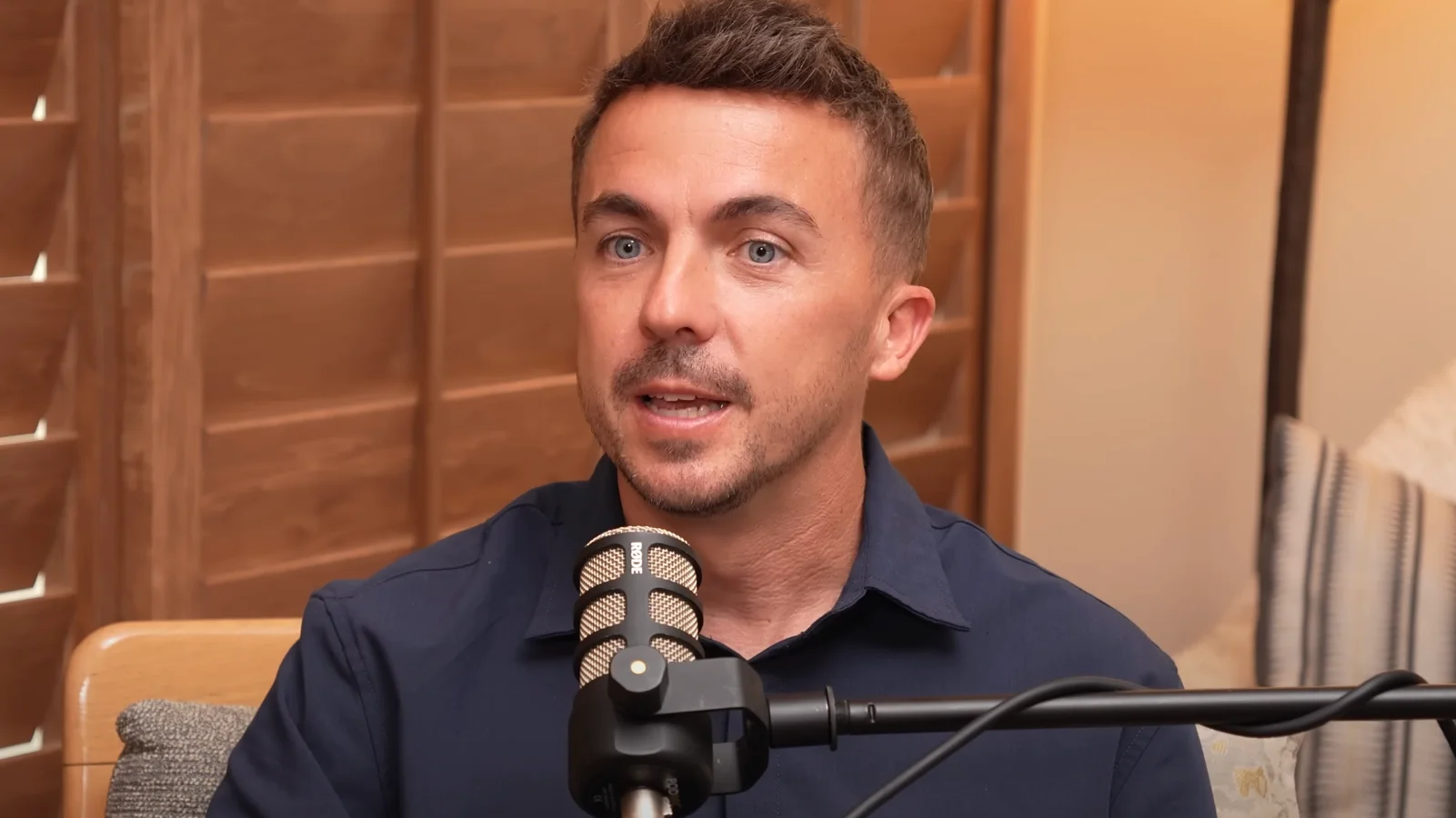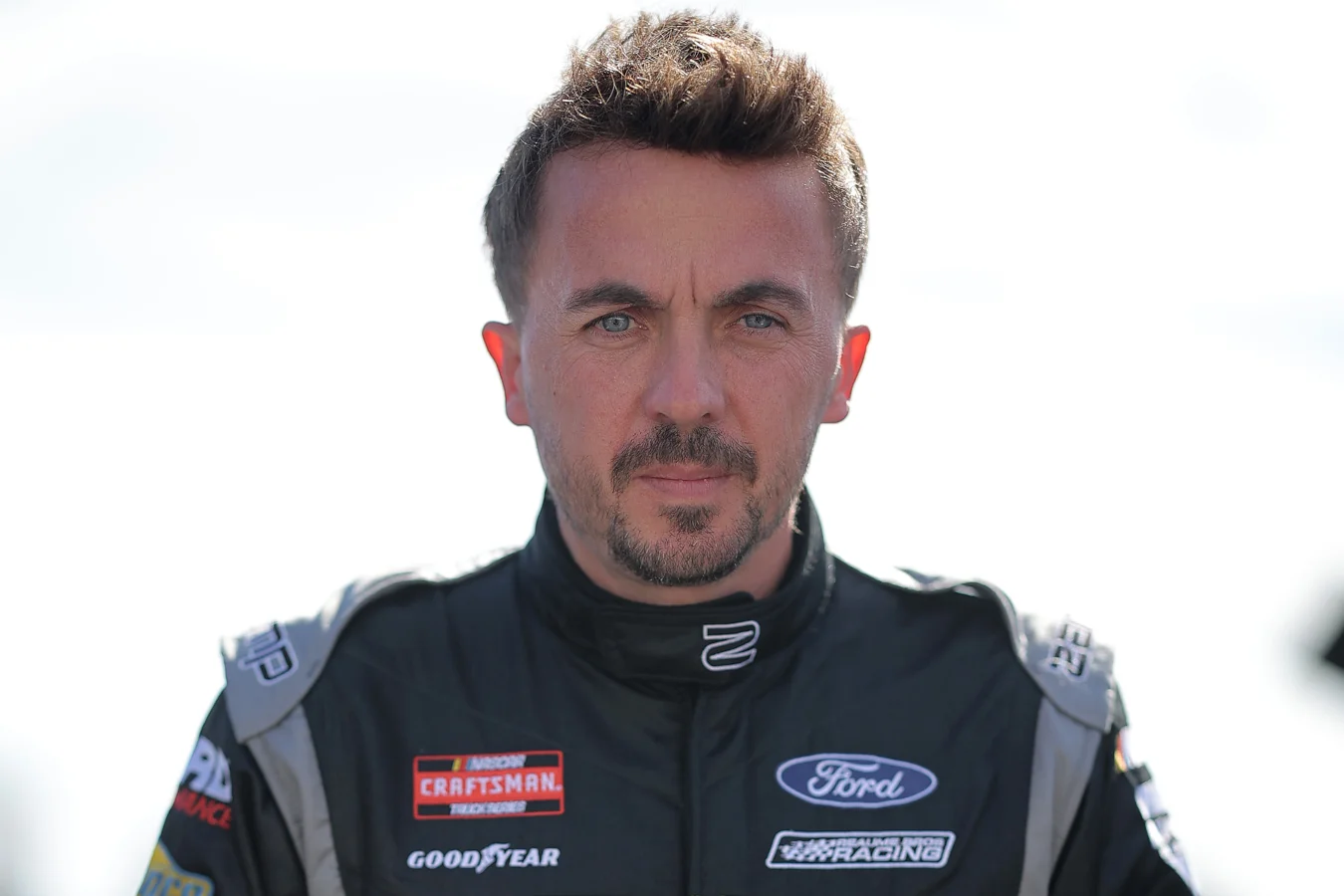Frankie Muniz, best known for his acting career, opened up about his intense and reality-altering Frankie Muniz NASCAR racing experience during the ARCA Menards Series and his transition into NASCAR’s Craftsman Truck Series. Speaking candidly, Muniz described the physical and mental challenges he’s faced, revealing how the aggressive nature of stock car racing forced him to completely rethink his approach on the track.
The Journey from Hollywood to NASCAR’s High-Speed World
After earning fame on television with hits like Malcolm in the Middle and achieving industry recognition with Emmy and Golden Globe nominations, Frankie Muniz’s unexpected pivot toward motorsports began with a defining moment at age 15. That year, he was invited to ride in the pace car for the 2001 Daytona 500—a race that became infamous for the tragic loss of The Intimidator. The experience ignited an interest in racing serious enough that Muniz competed in the celebrity circuits, eventually winning the 2005 toyota/”>Toyota Pro/Celebrity race, which led to his transition into full-time racing.
Muniz’s racing journey was not without setbacks. In his most recent NASCAR Truck Series season, his progress was abruptly halted by a severe ladder accident at home, resulting in a fractured wrist and sidelining him from crucial races. This injury forced Muniz into a 6 to 8-week recovery period, missing events like Darlington. Despite this, he delivered an impressive performance at the Mustang Challenge at Le Mans, piloting a TechSport Racing ford/”>Ford Mustang Dark Horse R (DHS class) to a second-place finish in his division and 10th overall in one of the weekend’s events. Though his first race result was mid-pack, Muniz displayed resilience and skill on the endurance circuit, but it was the stark contrast in racing cultures that left the deepest impression on him.

Adapting to NASCAR’s Aggressive Racing Culture
The world of NASCAR, Muniz soon discovered, demanded an adaptation to the rubbing is racing principle—a far cry from his early experiences in open-wheel disciplines like Formula BMW and the Atlantic Championship, where any contact can have dire consequences. Reflecting on these differences, Muniz discussed his evolution on a podcast with Joe Vulpis:
“You have to be, and that was a big wake-up call this year. You know, even though I’ve been racing for years, the type of racing I used to do — more open-wheel racing, IndyCar racing, stuff like that — you can’t touch each other. You can’t hit each other, because someone’s gonna become an airplane and die, you know what I mean? I mean, NASCAR is a full-contact sport, and they will push you out of the way. They don’t care.”
—Frankie Muniz, NASCAR Driver
His formative years in open-wheel racing ingrained in him the importance of precision and avoiding contact at all costs. Entering NASCAR exposed him to a racing environment where physicality forms the core of competition and where tactics like the bump and run are considered integral. These techniques—long embedded in NASCAR culture—allow a trailing driver to tap the leader’s bumper, disrupting their line just enough to initiate a pass. This kind of contact, discouraged or penalized in F1 and open-wheel series, is not only common but celebrated in stock car racing.
Muniz revealed on the podcast,
“They don’t care if they wreck you; they don’t care if you, you know, get hurt. They don’t want to hurt you, but they’re doing whatever they have to do to win, and there are no rules saying they can’t. Whereas in F1, if you hit someone, you’re getting a penalty, or you’re gonna get suspended, or you’re gonna lose your license. In NASCAR, it’s almost celebrated, and it took me a really long time to get that in my head. I was racing everybody fairly clean, and I’d get hit, knocked out of the way, and I’m like, ‘Whoa, dude, you know?’ And then it finally clicked.”
—Frankie Muniz, NASCAR Driver
This adjustment proved challenging, with Muniz recalling the moments when he realized that clean racing would often be met with unexpected contact and aggressive maneuvers. Yet, he now recognizes these tactics as a form of competitive intelligence, vital for success in the NASCAR Truck Series. Bump and run, for instance, isn’t simply reckless; it’s a calculated move intended to shake loose a defensive opponent when traditional overtaking becomes impossible. Mastery of this culture has become essential for Muniz, especially as he competes full-time for Reaume Brothers Racing in 2025.
Embracing a New Life Beyond Hollywood
Muniz’s dramatic personal transformation did not begin and end with motorsports. For years, the actor enjoyed the limelight, starring as a child actor from age 13 in Malcolm in the Middle and later in big-screen projects such as Big Fat Liar and Agent Cody Banks. However, at just 21, he made the decision to withdraw from the Hollywood scene, a move he now regards as life-defining.
In a recent interview with US Weekly, Muniz reflected on the impact of his choice to relocate from Los Angeles to Phoenix, attributing his newfound appreciation for life’s simple pleasures to this major change.
“I’m so lucky taking that step back happened, because it made me appreciate everything more. I feel like it saved my life in the sense that I started enjoying the little aspects of life more, like hiking [and] going to the grocery store, because it was easy. I didn’t have to fight [to] find a parking spot or pay for valet.”
—Frankie Muniz, NASCAR Driver
The simplicity and freedom he discovered outside Hollywood allowed Muniz to nurture passions like racing, paving the way for his current career in NASCAR. This focus shifted his priorities, fostering personal growth and contentment, while he also teased a potential return to acting—even referencing the longstanding conversations about a Malcolm in the Middle reboot.
He remarked,
“Having stepped away from Hollywood a bit to focus on other things and get the opportunity to jump back into it in a big way was awesome. At times, you take things for granted… now I try to put more effort into everything.”
—Frankie Muniz, NASCAR Driver
Now dedicated to a full schedule in the NASCAR Truck Series, Muniz’s experiences stand as an example for those facing pivotal career crossroads, proving that reinvention and resilience are possible even in the high-speed, high-risk world of professional racing.
The Broader Effect and What Lies Ahead
Frankie Muniz’s NASCAR racing experience has thrown light on the often-misunderstood reality behind stock car racing’s hard-nosed culture. For fans and aspiring drivers alike, his journey from stardom in Hollywood to the fast-paced danger of top-tier motorsports showcases both the intensity of NASCAR’s traditions and the personal transformation that can result from embracing change. As Muniz continues to heal from his injury and adapt to the uncompromising demands of the sport, the racing world—and audiences watching his progress—wait eagerly to see how he will blend his competitive spirit with his growing expertise behind the wheel.
